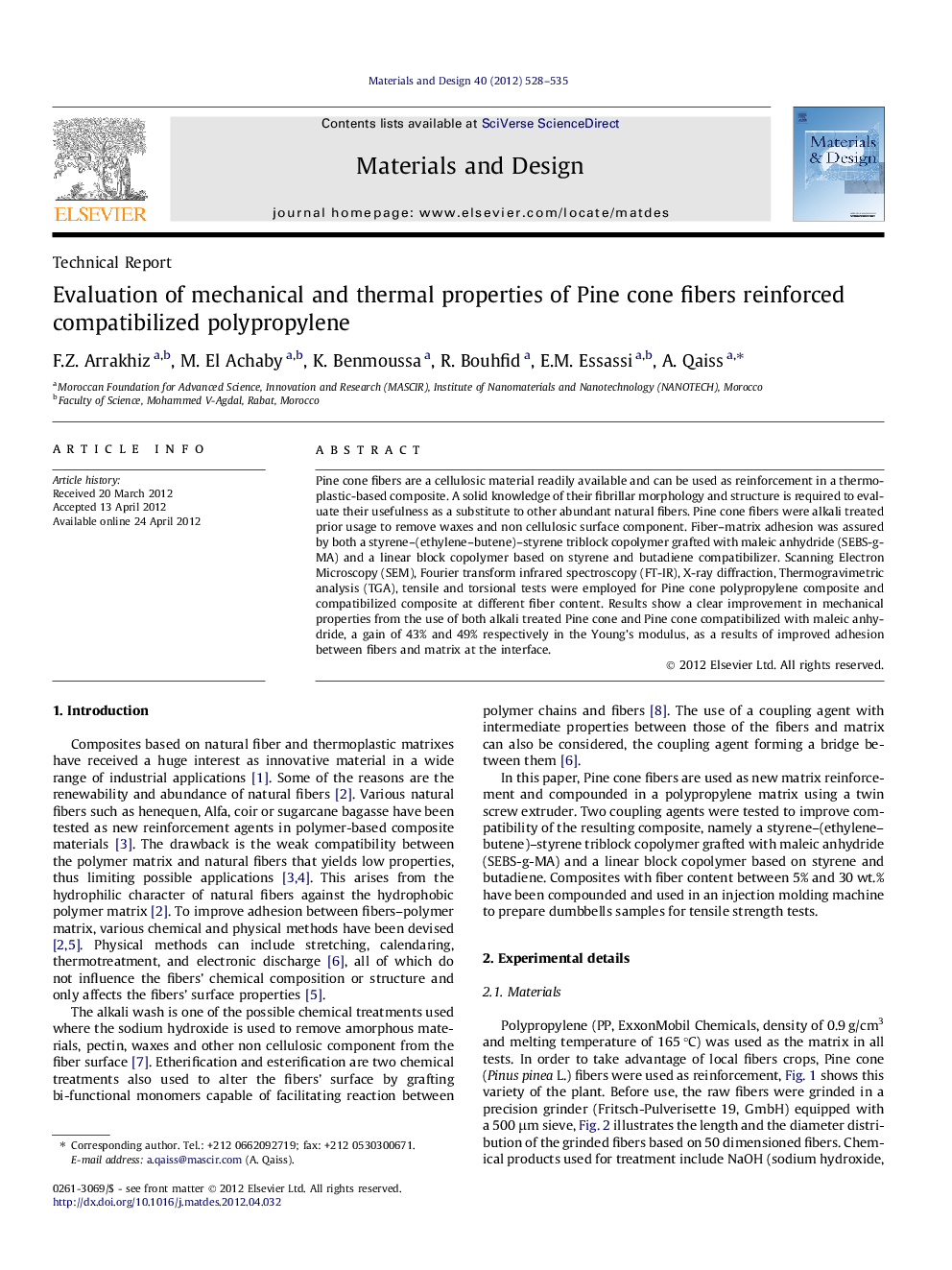| کد مقاله | کد نشریه | سال انتشار | مقاله انگلیسی | نسخه تمام متن |
|---|---|---|---|---|
| 830635 | 1470357 | 2012 | 8 صفحه PDF | دانلود رایگان |

Pine cone fibers are a cellulosic material readily available and can be used as reinforcement in a thermoplastic-based composite. A solid knowledge of their fibrillar morphology and structure is required to evaluate their usefulness as a substitute to other abundant natural fibers. Pine cone fibers were alkali treated prior usage to remove waxes and non cellulosic surface component. Fiber–matrix adhesion was assured by both a styrene–(ethylene–butene)–styrene triblock copolymer grafted with maleic anhydride (SEBS-g-MA) and a linear block copolymer based on styrene and butadiene compatibilizer. Scanning Electron Microscopy (SEM), Fourier transform infrared spectroscopy (FT-IR), X-ray diffraction, Thermogravimetric analysis (TGA), tensile and torsional tests were employed for Pine cone polypropylene composite and compatibilized composite at different fiber content. Results show a clear improvement in mechanical properties from the use of both alkali treated Pine cone and Pine cone compatibilized with maleic anhydride, a gain of 43% and 49% respectively in the Young’s modulus, as a results of improved adhesion between fibers and matrix at the interface.
Figure optionsDownload as PowerPoint slideHighlights
► Pine cone fibers are used as reinforcement in thermoplastic matrix.
► Pine cone fiber was alkali treated to remove waxes and non cellulosic component.
► Fiber–matrix adhesion was assured by the use of a SEBS-g-MA as a compatibilizer.
Journal: Materials & Design - Volume 40, September 2012, Pages 528–535